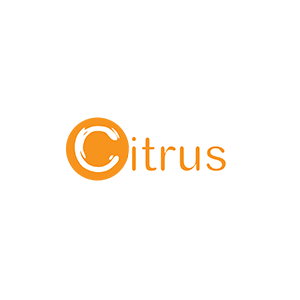Overview - Trademark Objection - Reply to Examination Report
Updated on
Find Trademark Objection Reply Goverment Fee
Trademark Objection Reply goverment fee computation tool. Fill below details and submit
| Description | Amount |
|---|---|
| {{r.name}} | {{r.amt}} |
| Total | {{total}} |
Trademark Registration Process : Examination / Objection
The following are the different stages of Trademark Registration process in India.
- Stage 1: Trademark Application Filing
- Stage 2: Scrutiny of Application / Formality Check / Vienna Codification
- Stage 3: Trademark Examination / Objection / Hearing
- Stage 4: Publication in the Trademark Journal / Opposition / Hearing
- Stage 5: Registration of Trademark.
Trademark Objection
Trademark Objection is the second stage of Trademark Registration Process. All the Trademark applications will be examined by the Registrar of Trademarks.
Trademark Examination Report
After examination of the application, the registry makes an examination report of application and will decide whether the application can be accepted or not. if accepted, the registry moved forward to advertise the trademark. In case if the examination report contains any observations, the same will be communicated to the applicant/trademark agent for submitting a reply to the examination report.
Trademark examination report shall contain the reason for objection. The applicant is required to file his reply in 30 days from the examination report. Generally, this examination report will be communicated to the trademark agent for action.
Thereafter, the applicant will be directed to file a reply to the objection within 30 days of the examination report. If the reply to the examination report found satisfactory, the Registrar shall proceed to accept the application and will advertise the same on Trademark Journal.
Reasons for Objections
The following are the major reasons marking the application as objected by the Registrar if Trademark:
- # If the trademark does not have distinctive character or not capable of distinguishing the goods or services.
- # If the trademark applied for registration is similar to the marks already registered/applied.
Reasons for Objections - Explained
The grounds of refusal of TM application can be divided into two parts:
A. Absolute grounds of refusal :
Section 9(1) to (3) of Trade Marks Act, 1999
Section 9(1) prohibits the registration of those trademarks:
- a. which are devoid of any distinctive character, that is to say, not capable of distinguishing the goods or services of one person from those of another person;
- b. which consist exclusively of marks or indications which may serve in trade to designate the kind, quality, quantity, intended purpose, values, geographical origin or the time of production of the goods or rendering of the service or other characteristics of the goods or services; or
- c. which consist exclusively of marks or indications which have become customary in the current language or in the bonafide and established practice of the trade.
Section 9(2) states that a mark shall not be registered as a trademark if —
- a. it is of such nature as to deceive the public or cause confusion;
- b. it contains or comprises of any matter likely to hurt the religious susceptibilities of any class or section of the citizens of India;
- c. it comprises or contains scandalous or obscene matter;
- c. its use is prohibited under the Emblems and Names (Prevention of Improper Use) Act, 1950.
Section 9(3) A mark shall not be registered as a trademark if it consists exclusively of—
- a. the shape of goods which results from the nature of the goods themselves; or
- b. the shape of goods which is necessary to obtain a technical result; or
- c. the shape which gives substantial value to the goods. Explanation.— For the purposes of this section, the nature of goods or services in relation to which the trademark is used or proposed to be used shall not be a ground for refusal of registration.
B. Relative grounds of refusal :
Section 11 of Trade Marks Act, 1999 lists the relative grounds for refusal of registration.
- Section 11 of the Act stipulates that where there exists a likelihood of confusion on the part of the public because of the identity with an earlier trademark or similarity of goods or services, the trademark shall not be registered.
In other words, where there is similar trademark exist in the Trademark register the trademark shall not be registered.
The term “earlier trade mark” means a registered trademark or an application which has a date of application earlier than the trademark in question.
Timelines for Filing Reply to Examination Report
The reply to Examination Report has to filed within 30 days of the examination report with supporting documents. Also, the reply to the trademark examination report should be drafted with legal expertise referring decided cases on similar matters and judgements by Tribunals / Courts / International references.
Extension of Time To File Objection Reply:
In case the reply is not filed within 30 days of the report, the application will be declared as abandoned. The applicant can request the registrar to extend the time limit of 30 days by applying TM-M electronically through the trademark agent with a valid reason for the delay in filing the reply.
If the reply to the examination report is to be filed through a different trademark agent, a fresh Power of Attorney is also required.. Once the filing is done then need to draft objection reply for the same.
Consequences of non-filing of Reply
Timely filing of reply to trademark objection is a crucial step of Trademark Registration Process. If the reply to examination report is not filed within 30 days of notice / or by the extended time, the Trademark application shall be marked as abandoned by the Trademark Registry.
In case the application has been marked as abandoned, the applicant has to file a fresh application for the Trademark.
Get your Company/LLP Up in 7 days
Companiesinn is the only online legal service provider have the ability to evaluate legal questions and advise without human intervention.
Trademark Objection Reply - Requirements
Reply with in 30 Days
Applicant has to file reply to the same within 30 days of the objection. In case the reply is not filed within 30 days of report, the application will be declared as abandoned.
Extension of Time for Reply beyond 30 days
Applicant can file application for extension of time for filing reply in Form TM-M with requisite (₹900.00).
How to file reply to Trademark Objection
Trademark Objection Response
When the registrar is of the opinion that the application is liable for objection, the status of the application is changed to OBJECTED. A copy of examination report will be communicated to the trademark agent mentioning the reason for the objection and the applicant has to file reply to the same within 30 days of the objection.
Analyse the examination report
First step is to analyse the examination report and to determine the reason for the objection raised.
Draft reply to Objection
Next step is to prepare an objection reply mentioning proper answer to the objection raised with supporting rule of law and judgments supporting the case, along with other supporting documents and evidence that validates the response.
Timelines for reply
The reply to objection has to filed within 30 days of the examination report with supporting documents.
If the Reply is accepted:
If the response is accepted, the application will be processed further for registration and advertisement in the Trademark Journal.
If it is not accepted,
If it is not accepted, the registry will mark the matter for hearing and date / time wll be notified to the Trademark Agent.
Documents Required
A formal reply to the examination report is required to be submitted with sold clarifications and evidences as to why the the application is to be accepted. Following are the documents required.
- 1. Power of Attorney
- 2. Reply to Examination Report
- 3. Documentary proof of Trademark in commercial use which includes invoices, letterheads and communications, visiting cards, screenshots of websites, brochures, financial statements and all other evidences where trademark is being used.
Trademark Objection
Opportunity for Detailed Submission
Applicant gets an opportunity of being heard and it eliminates the chances of Trademark being rejected straightway.
A perfect Reply adds chances for Acceptance
If the objection reply is filed perfectly then there are highest chances of getting the trademark registered.
Faq - Trademark Objection Reply
In other words, If a trademark is devoid of distinctive character, the same cannot be registered. Devoid of any distinctive character means, not capable of distinguishing the goods for which protection is claimed. For example: RAMAYAN' is not a distinctive mark and is devoid of any distinctive character. The mark is not capable of distinguishing the goods of one person from those of another person so the same cannot be registered
It is a rule that common language words or descriptive words cannot be trademarked by any trader unless and until such trade names have acquired such a great reputation and goodwill in the market that the common language word has assumed a secondary significance. A common/descriptive word cannot be trademarked, and it must have had acquired distinctiveness/secondary meaning for the trademark to be registered. Secondary significance here mean that other traders in that line of trade acknowledge that such common words have come to denote the goods belonging to a particular trade.
In J.L. Mehta v. Registrar of Trademarks, The trademark "SULEKHA" is a Hindi word which has a dictionary meaning i.e. a person with good handwriting and is, therefore, a descriptive word. The Court observed that since "SULEKHA" is being used in relation to fountain pens, nibs etc, it was a valid trademark.
Hence Common words of a language/ descriptive words can be trademarked, when they are used in relation to a different class of goods.
This section has been inserted in the Act primarily to protect the free use of indications or marks which are already in use in the trade, from being monopolized as a trademark. Provided that a trademark shall not be refused registration if before the date of application for registration it has acquired a distinctive character as a result of the use made of it or is a well-known trademark.
The basis of this section is that a trader should not obtain a statutory monopoly through registration in a word which another trader might wish to use. A competitor should make bonafide use of the word, to describe his goods. If a word, however, through use has become clearly associated in the public mind with the goods/service of a particular trader, then it could not be legitimately used as a trademark by a competitor. For this purpose, the onus is on the applicant to show proper evidence that the trademark, by reason of use has acquired distinctiveness in relation to his goods or services.
(a) it is of such nature as to deceive the public or cause confusion;
(b) it contains or comprises of any matter likely to hurt the religious susceptibilities of any class or section of the citizens of India;
(c) it comprises or contains scandalous or obscene matter;
(d) its use is prohibited under the Emblems and Names (Prevention of Improper Use) Act, 1950.
Under Section 9(2), if the confusion arises, even without the involvement of any other mark or being no similarity with any other mark, the registration may still be refused if the mark is of such nature that it will cause confusion. For a successful opposition, the opponent has to establish by proper evidence that its mark had acquired reputation by use and the mark of the applicant if registered is not likely to cause confusion.
Section 9(3) is intended to prevent monopolies being created under the Trade Marks Act, by trademarks constituted by the shape of goods giving the proprietor a permanent and substantial advantage over his potential competitors.
In order to avoid an objection, a mark constituted by a shape must be sufficiently different from a shape which is
(a) characteristic of the product;
(b) the norm or customary in the sector concerned
In other words, the shape should not be descriptive and must stand out from the crowd.
In other words, where there is similar trademark exist in the Trademark register the trademark shall not be registered. The registration of a mark which is merely reproduction or imitation of a well-known mark is also prohibited.
The term “earlier trade mark” means a registered trademark or an application which has a date of application earlier than the trademark in question.







